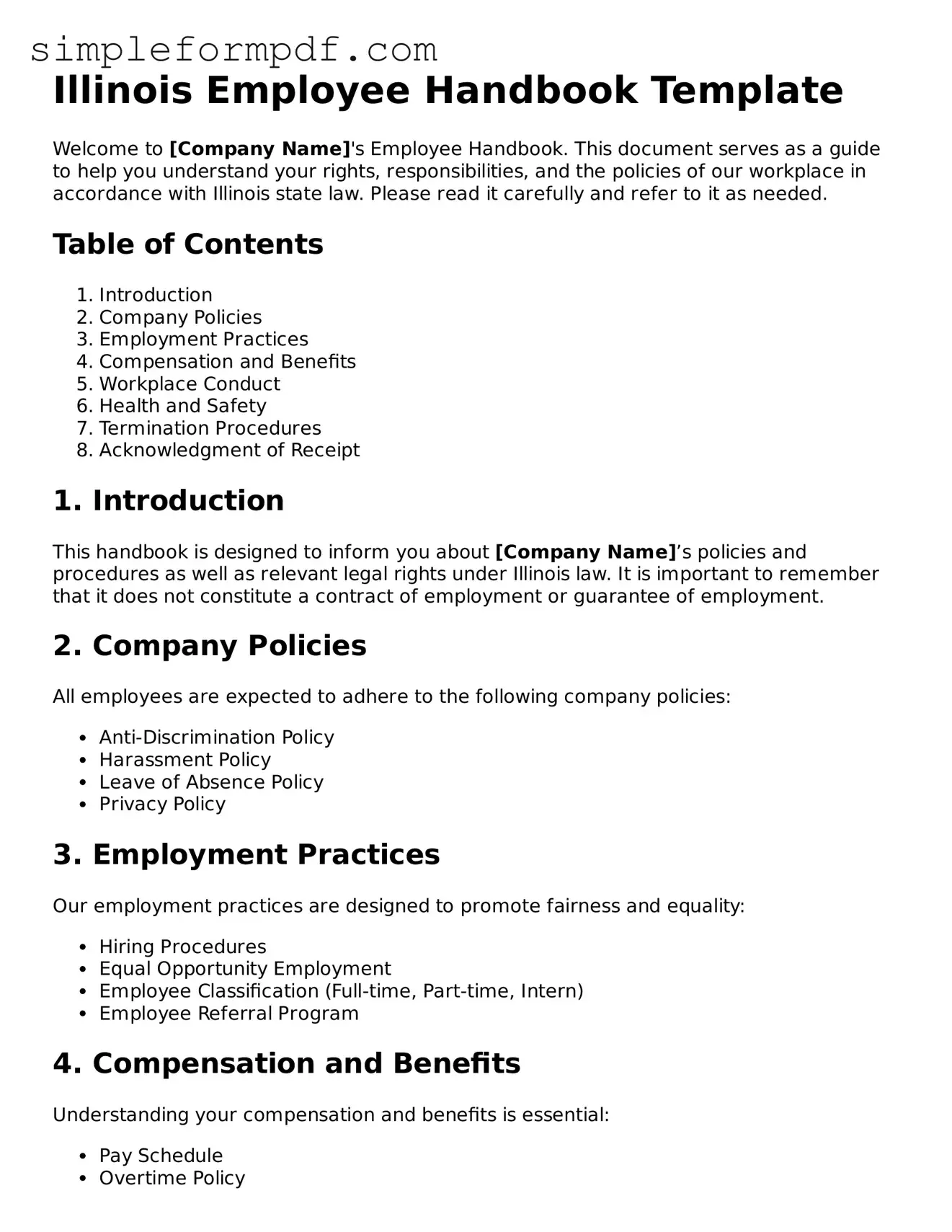Illinois Employee Handbook Template
Welcome to [Company Name]'s Employee Handbook. This document serves as a guide to help you understand your rights, responsibilities, and the policies of our workplace in accordance with Illinois state law. Please read it carefully and refer to it as needed.
Table of Contents
- Introduction
- Company Policies
- Employment Practices
- Compensation and Benefits
- Workplace Conduct
- Health and Safety
- Termination Procedures
- Acknowledgment of Receipt
1. Introduction
This handbook is designed to inform you about [Company Name]’s policies and procedures as well as relevant legal rights under Illinois law. It is important to remember that it does not constitute a contract of employment or guarantee of employment.
2. Company Policies
All employees are expected to adhere to the following company policies:
- Anti-Discrimination Policy
- Harassment Policy
- Leave of Absence Policy
- Privacy Policy
3. Employment Practices
Our employment practices are designed to promote fairness and equality:
- Hiring Procedures
- Equal Opportunity Employment
- Employee Classification (Full-time, Part-time, Intern)
- Employee Referral Program
4. Compensation and Benefits
Understanding your compensation and benefits is essential:
- Pay Schedule
- Overtime Policy
- Health Insurance Options
- Retirement Plan
5. Workplace Conduct
We value professionalism and respect in our workplace:
- Code of Conduct
- Dress Code
- Attendance Policy
- Conflict Resolution Procedures
6. Health and Safety
Your health and safety are our priority. The following guidelines are in place:
- Workplace Safety Protocols
- Emergency Procedures
- Reporting Safety Hazards
- First Aid Measures
7. Termination Procedures
In the event of termination, these steps will be followed:
- Notice Period
- Final Paycheck
- Return of Company Property
- Exit Interview
8. Acknowledgment of Receipt
By signing below, you acknowledge that you have received and read the [Company Name] Employee Handbook.
__________________________
[Employee Name]
__________________________
Date
If you have any questions or need clarification regarding any of the policies, please do not hesitate to reach out to your supervisor or the Human Resources department.
